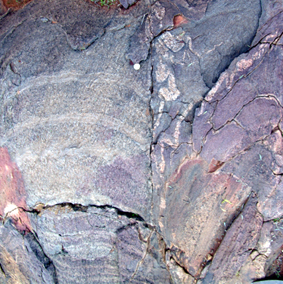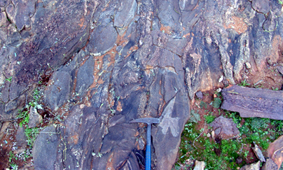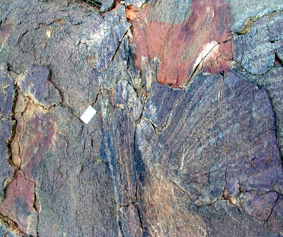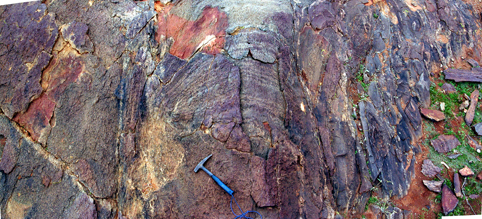| The Monuments Locality,
NE of Broken Hill, in Sundown Group rocks,
records the heterogeneous behaviour of pelites and psammites. The
Na-poor pelites do not melt at the peak metamorphic conditions in this
locality, but the psammites do. The melt-rich psammite-dominated
regions become disrupted by granitic melt flow. The original tectonic
foliation and bedding become transposed into the axial planar
orientation of F2 and more refractory layers become disrupted. These
high strain zones loose some or most of their melts, producing
heterogeneous bands rich in refractory material, and cushioning the
more competent pelite-rich areas from the impact of deformation. The
result is that in between these melt-rich high strain zones,weakly
folded pelite boudins are preserved.
This outcrop is included in the excursion because it demonstrates the role of melt in deformation and because, similar to the issue of permeability of rocks, it shows that it is not the small scale viscosity of partially molten rocks as measured in the laboratory that controls the behaviour of rock masses, but it is their ability to take up strain which is fundamentally controlled by the dynamically changing geometrical distribution of channelways through the rock mass. |
A) West side of the
open fold in the pelite, showing truncation and fragments of pelites in
melt-rich
zone transposed to the axial planar orientation
of F2 (N30E). |
B) West side of the open
fold in the pelite, and breccia-like
distribution of fragments.
 |
C) East side of the open
fold in the pelite, showing truncation. |
